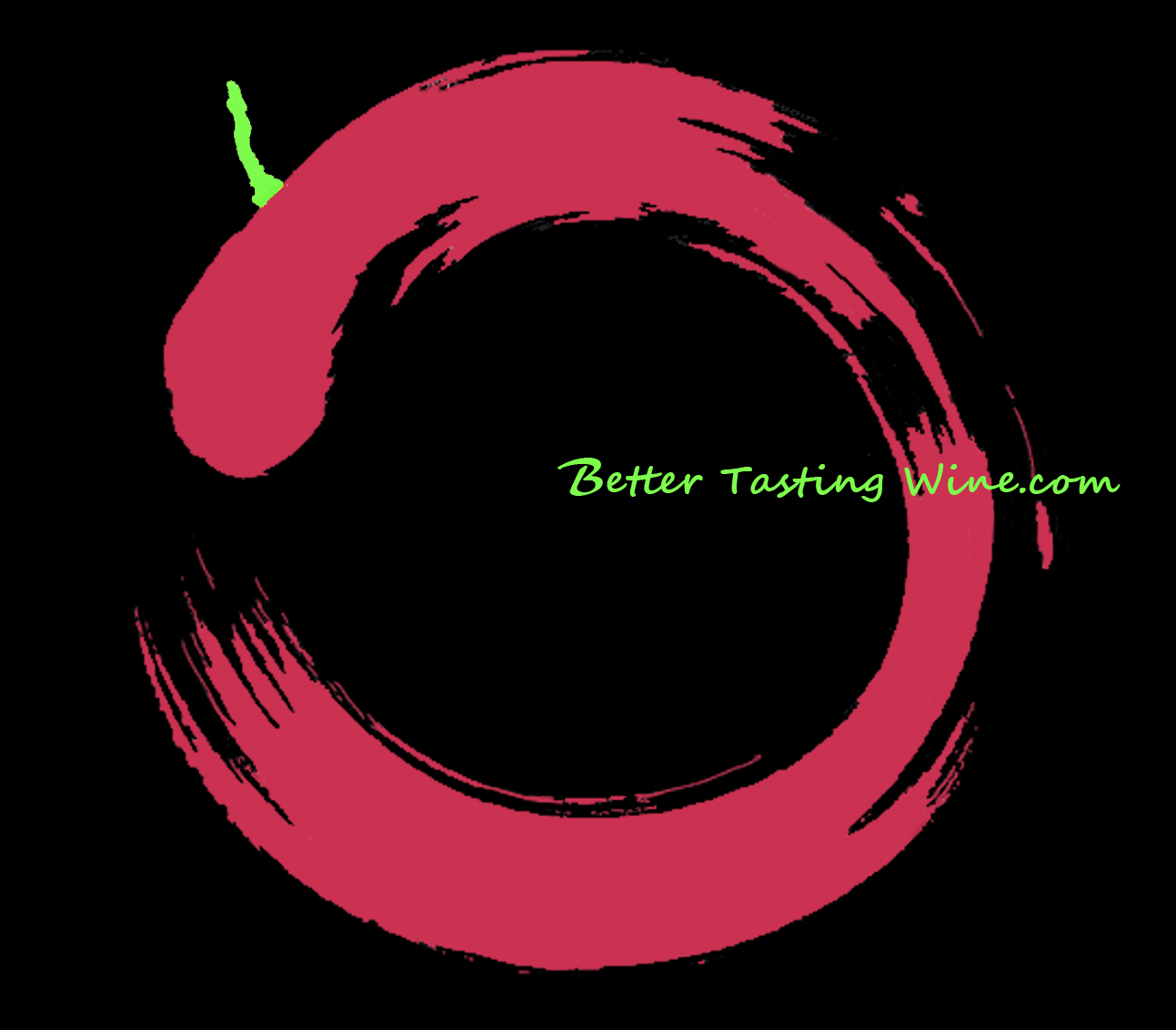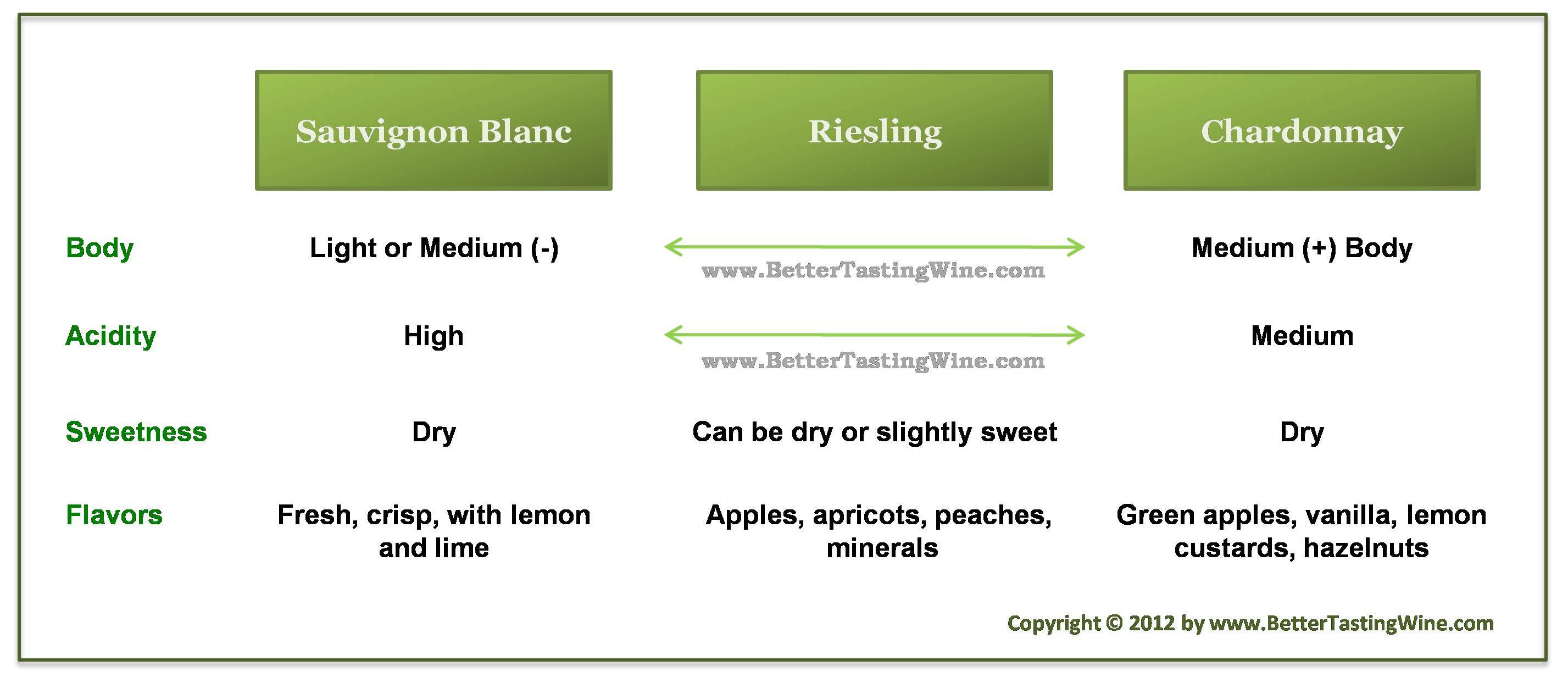Wine Tasting Tutorial: Chardonnay vs. Sauvignon Blanc vs. Riesling
Lesson Objectives:
- Know the basic white wine types
- Learn how to describe and differentiate white wines
- Know what to order in a restaurant
- Explore your palate preference
Lesson Preparation:
Prepare a bottle of Sauvignon Blanc, a bottle of Riesling, and a bottle of Chardonnay from a recent vintage. If you can, choose a wine in the US$ 10 - US$ 20 budget.
Tasting the wines side-by-side will help you compare, understand, and remember their unique characteristics. Using a young vintage will highlight their primary characteristics. The budget is to eliminate table wine quality wines and to get the most learning out of this comparative tasting exercise.
White Wine Tasting
Recall the 3 steps to wine tasting -- observe its appearance, smell its aroma, and taste, assessing various components. (Refer to wine tasting techniques)
Let's go through each step comparing the three white grapes to experience their differences in characteristics.
Appearance
Arrange the three glasses of wines with Sauvignon Blanc on the left, Riesling in the middle and Chardonnay on the right.
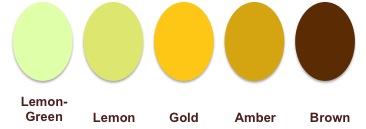
Observe the color of each wine. Note that Sauvignon Blanc has the lightest color intensity, while Chardonnay has the deepest color intensity.
In addition, their colors are different shades of lemon. Sauvignon Blanc's is lemon-green, riesling possibly pale lemon, while chardonnay may be a medium lemon or pale gold.
Next tilt the glass, observe if there is any difference in color at the rim.
Aroma
Do a quick clean check before giving the three wines a generous sniff. Start with Sauvignon Blanc, then Riesling, and finally Chardonnay.
On the Sauvignon Blanc, note the intense aroma. The nose feels "green" with notes of citrusy, grassy, goose-berry, and hints of elderflowers. If your bottle of Sauvignon Blanc comes from a warm climate, you may be able to pick up notes of melons.
Moving on to the Riesling, note that it is not as intense as Sauvignon Blanc on the nose. That is the character difference. Sauvignon Blanc is highly aromatic while riesling is more neutral (just like Gin and Vodka on the aroma). See if you can pick up notes of apples, peaches, limes, honeysuckle and or minerals.
On the Chardonnay, the nose should feel different. Most chardonnay are aged in oak, which gives it a vanilla, cedar, and possibly butterscotch and nutty aromas. Can you pick up underlying notes of lemon, green apples, and possibly melons?
The below figure compares and contrasts their aroma profile:
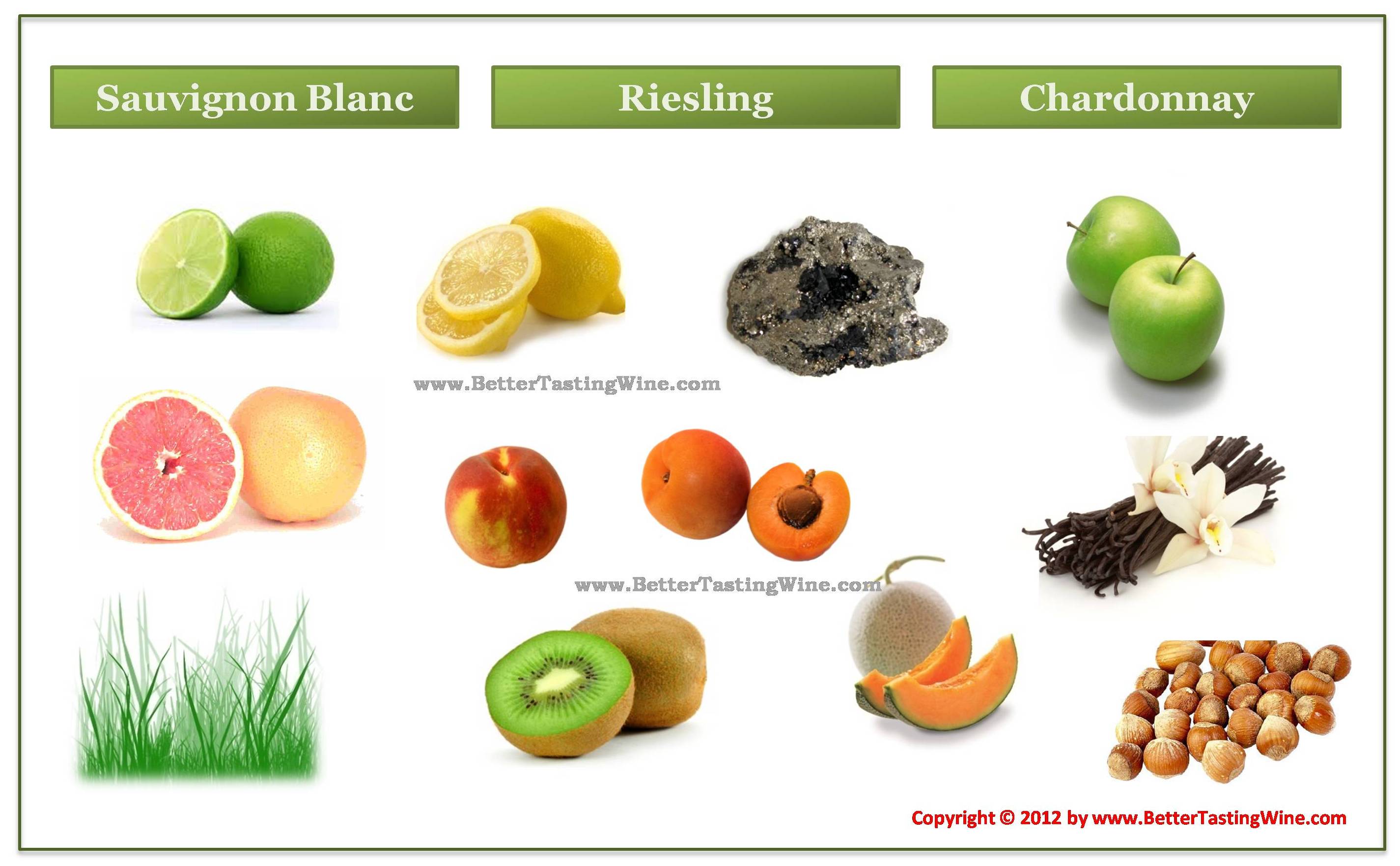
Palate
Give the three wines a good sip in the same order. Assess the key components: body, sweetness, alcohol, acidity, flavor intensity and length/ finish.
Sauvignon Blanc and Chardonnay should be dry. Is your Riesling dry or slightly sweet?
The below figure compares and contrasts the three noble grapes in color, palate, and pairing partners.
Note how the Sauvignon Blanc is lighter in body than the Chardonnay. Riesling, depending on where it is made, can be dry or sweet. Its body can also range from medium (-) to medium (+) in weight.
Chardonnay is often oaked (with the exception of most French Chablis Village). The maturation in oak barrel or the use of oak chips in many budget Chardonnay give it a heavier weight on the palate as well as its notes of vanilla and nuts.
Wine and Food Pairing
Sauvignon Blanc, with high acidity, can be a perfet pairing partner for a diverse range of dishes. Its sharp acidity will cleanse your palate. Classic pairing includes shellfish (oysters, clams, shrimps), fish (best lightly grilled or poached), salad and a wide range of appetizers.
Similarly high in acidity but more well-rounded in body (medium body in most cases), Riesling can pair well with a diverse range of seafood, appetizers, and asian cuisine. Some regions make a slightly sweet version which can be a perfect pairing partner for sushi, curry, spicy Thai and Indian cuisine.
Chardonnay, often oaked, has the fullest body of the three white noble grapes. Chardonnay pairs well with buttery dishes, buttered scallop or pan-fried halibut for example. It also pairs well with many pasta dishes, as well as roasted pork. Avoid pairing a complex and oaked bottle of Chardonnay with raw shellfish.
Exploring Your Palate Preference
It is important to know your palate so you won't buy a bottle you dislike nor order the wrong glass in the restaurant.
Of the three whites, which one is your favorite? Is there one you dislike?
Let's go one level deeper -- what is it that makes you prefer a particular white wine? Is it the high / low acidity? Is it the full / light body? Is it the fruit categories?
Remember the key characteristics of these three grapes. More importantly, understand what characteristics you appreciate in a wine.
Last but not least, do note that our appreciation of wine does change with time.. what we appreciate now may not be what we love later. Let's keep an open mind and continue exploring!
A summary below to capture what you should remember about these important white wine grape varieties:
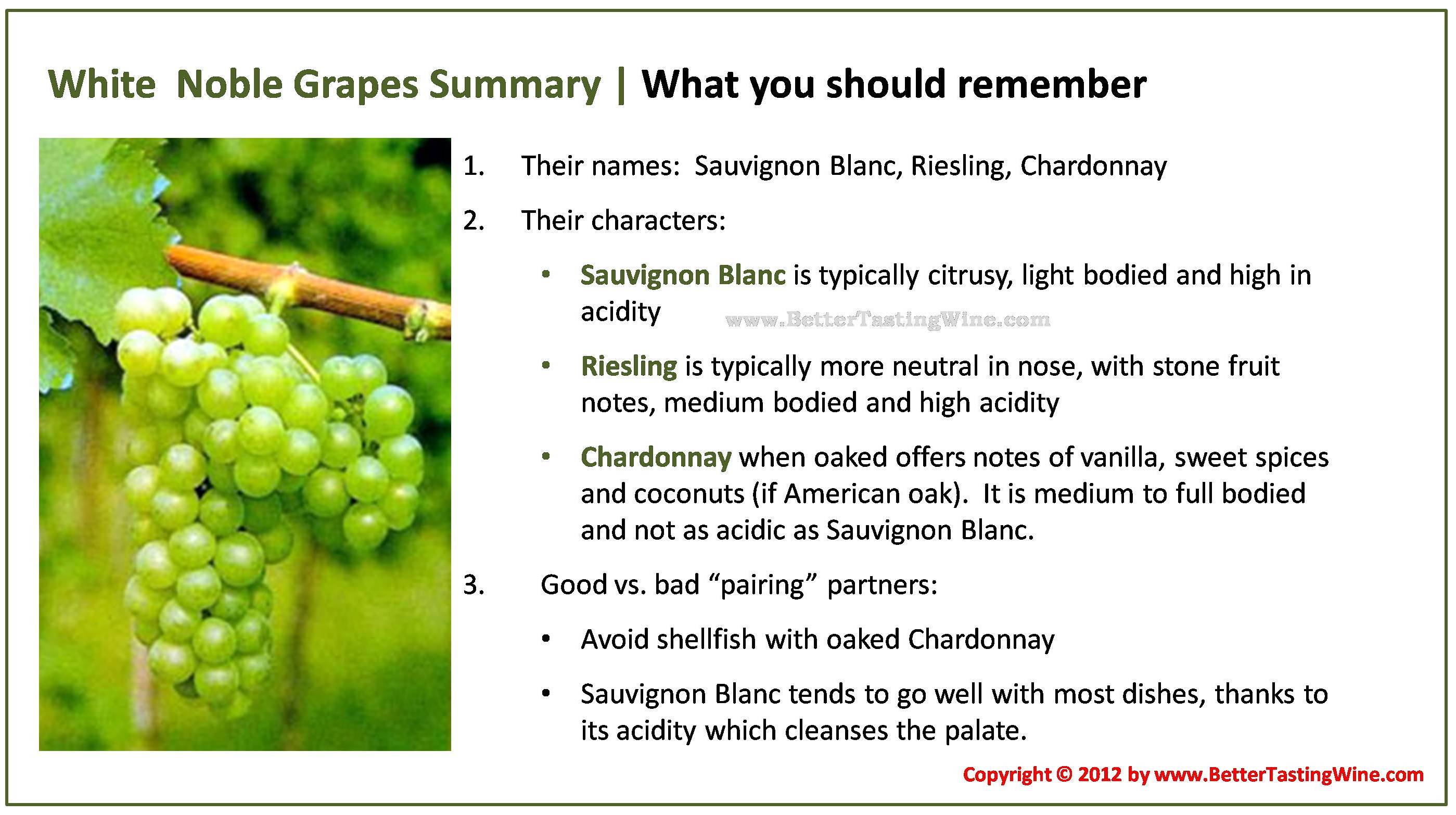
Stay informed. Follow us and subscribe here to get our latest wine insider news and tips:
Practical Wine Lessons: Wine Tasting Like a Pro | Grapes | Serving Wine | Food Pairing | Preservation | Temperature | Restaurant Ordering | Wine Labels | Wine Regions | Wine Storage | Start a Collection | Common Wine Myths.
Useful Wine Tips: Ten Facts to Become an Instant Wine Pro | Vintage Guide | Removing a Broken Cork | Serving Order of Wines | Fastest Way to Chill a Wine | Host Wine Party | Elements of a Good Wine | Wine Investment "Winning" Guide | Leftover Wine: Recipe for Vino Punch | Freeze Your Leftover Wine | Wine Moods Pairing | Best Way to Preserve Champagne After Open | Ten Must-Have Wine Accessories.
Tasting Tutorial: Cabernet vs. Merlot vs. Pinot Noir | Sauvignon Blanc vs. Chardonnay vs. Riesling | Burgundy vs US vs New Zealand Pinot Noir.
Fun Download: Wine Tasting Scorecard | Wine Serving Temperature Chart | Wine Aroma Table | 3 Must-Know Red Grapes | 3 Must-Know White Grapes | Vintage Chart | Wine Party Themes | Wine Region Maps | Grand Cru Chart | Wine and Moods Pairing Chart | Wine Quotes & Wine Humor.
Travel & Exploration: Champagne 101 | Bandol | Italy | Spain | Sherry.
Jewels & Gems: Grower Champagne Pierre Gimonnet | Gravner Ribolla - An Amber Wine Maturated in Clay | Gaja - King of Barbaresco.
